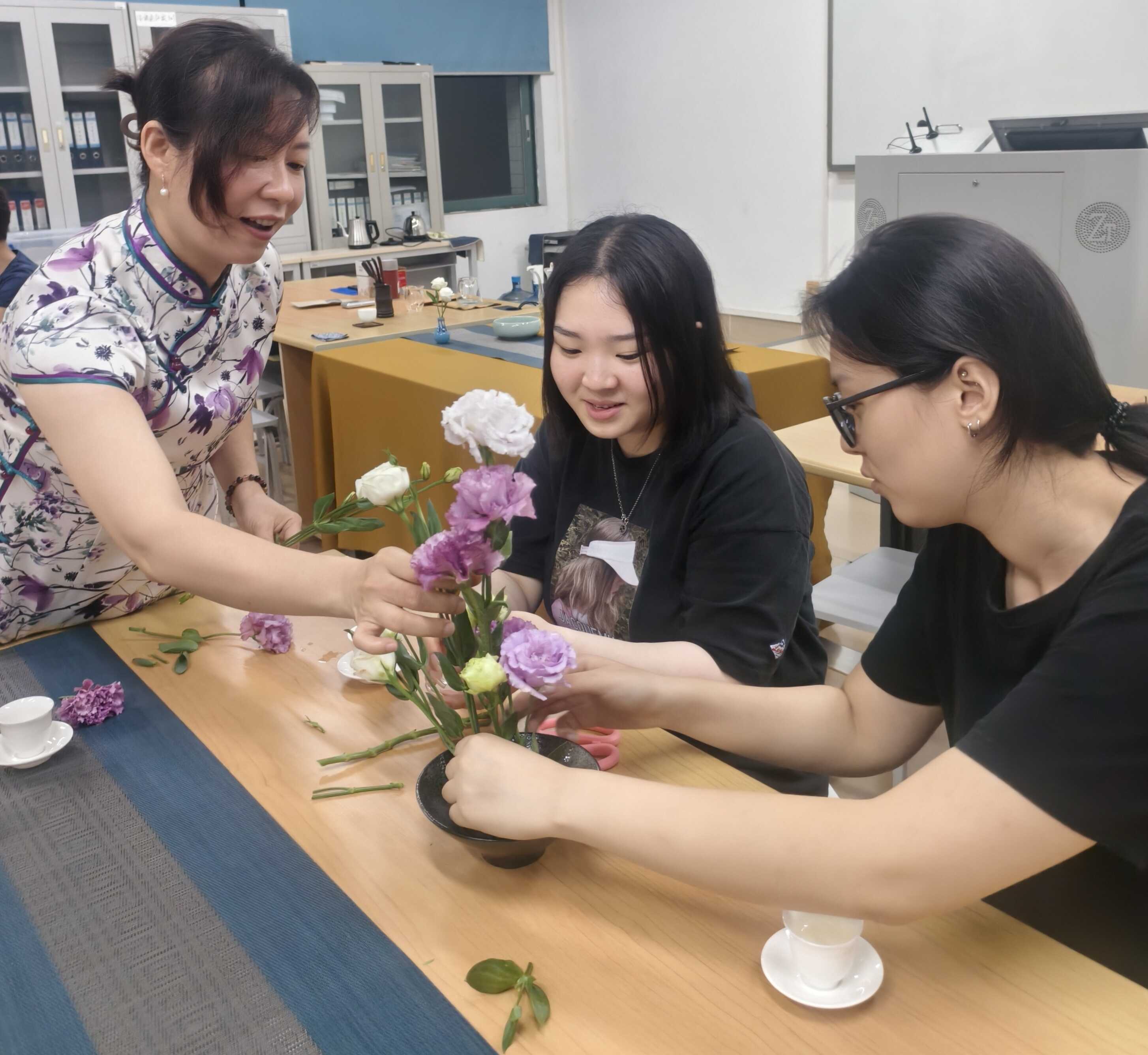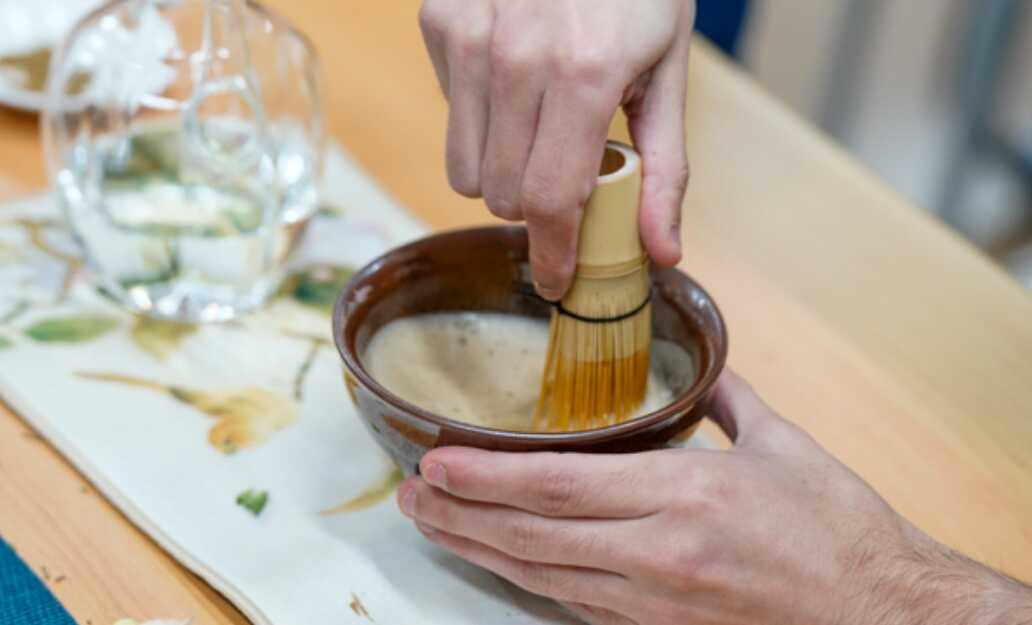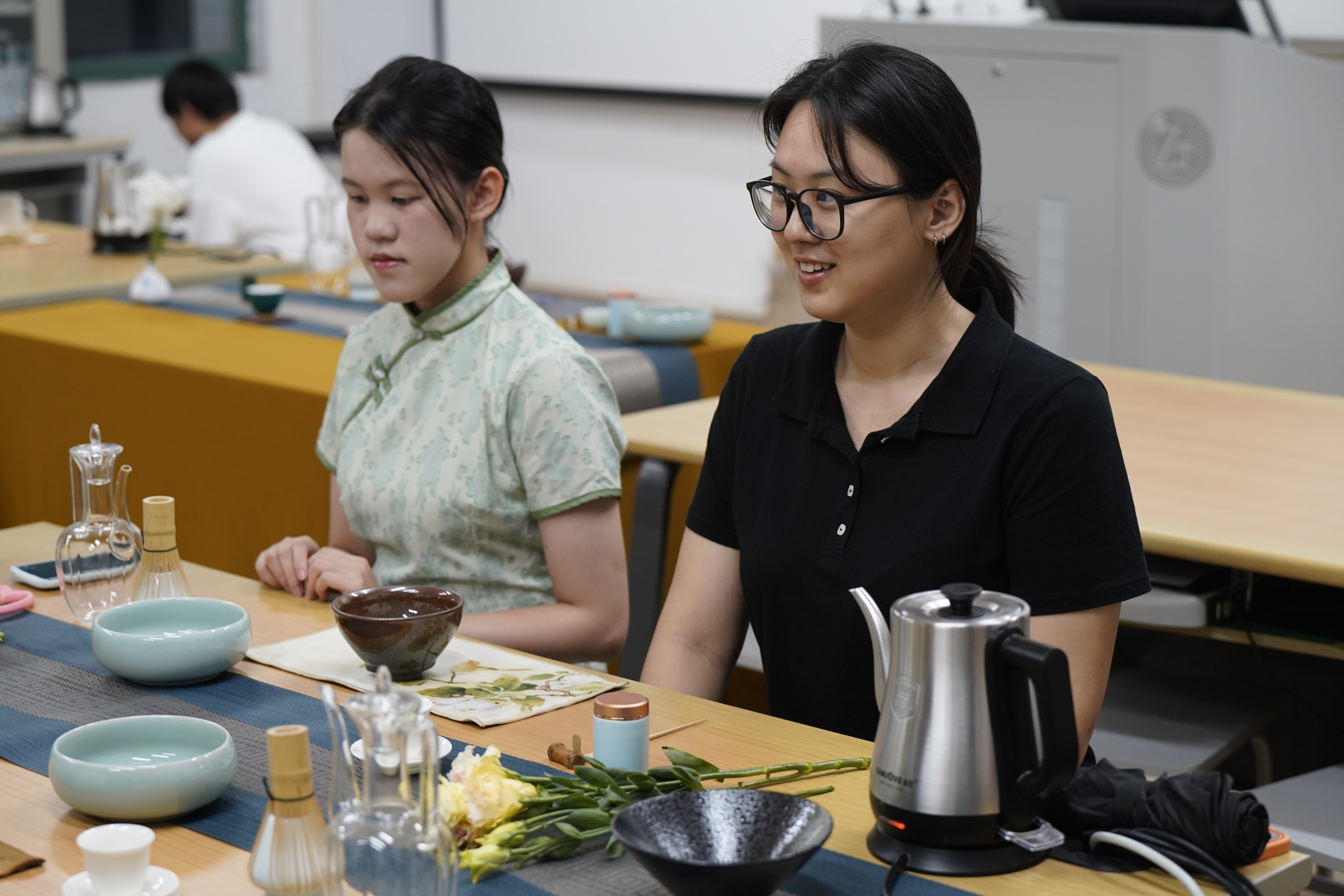On April 18th and 24th, at the South China Business College (SCBC) of Guangdong University of Foreign Studies, international students from five countries, such as Russia, the Republic of Korea, and Vietnam, gathered for a unique tea culture experience session. Nine students joined their Chinese counterparts to appreciate the Song dynasty tea ceremony and engage in the art of brewing tea in traditional Chinese bowls.

Guided by teacher Cai Haiyun from SCBC, the first lesson focused on the intricacies of the tea ceremony. Students participated in various steps including warming the bowl, whisking tea powder, adding hot water, and stirring. Carefully maneuvering the tea whisk, they blended the tea powder into a smooth paste. Teacher Cai emphasized that the tea ceremony is a feast for the senses, transforming color and form in a visually and tactilely immersive experience. Through repeated stirring, the green tea gradually frothed into a white foam atop the water, resembling miniature "cloud mountains."
After the tea was prepared, students were encouraged to "paint" on the surface of the tea, with one student writing the Chinese characters of "中国" (China). This creative expression not only showcased his deep affection for the school but also highlighted his profound love for Chinese culture and tea.

In the second session, Teacher Cai introduced two different types of tea, white tea, and green tea, to demonstrate the process of brewing tea in traditional bowls. She meticulously followed multiple steps including bowing, warming the utensils, wafting fragrance, warming the cups, rinsing the tea, pouring the water, distributing the tea, serving the tea, and finally, tasting the tea, illustrating the complete process of brewing tea in bowls.
Throughout the demonstration, Teacher Cai shared her expertise, explaining how warming the utensils and wafting fragrance can enhance the aroma of the tea. She also emphasized the etiquette of pouring tea, stating "When serving wine, show respect and gratitude to guests by ensuring their drink is filled; when serving tea, do not overfill the tea cup to avoid making the guest uncomfortable," advising students to fill the cup to seventy percent to avoid scalding the drinker.
Furthermore, Teacher Cai provided detailed instructions on the etiquette of serving and tasting tea. When serving tea, one should extend their hand to the recipient as a gesture of respect, while when tasting, one should hold the cup with the right hand and support it with the left hand, avoiding touching the rim of the cup. She also gave guidance on the different ways men and women should hold the cup.

Teacher Cai stated that the purpose of the course was to deepen students' understanding of traditional Chinese culture and enhance their humanistic qualities. She noted that each session had its own unique features, with the Song dynasty tea ceremony allowing students to immerse themselves in the elegant lifestyle of that era, while the bowl brewing session taught them tea table etiquette and the complete process of brewing tea, enabling them to begin appreciating tea from four aspects: appearance, color, aroma, and taste.
A student from the Republic of Korea expressed that despite the similarities between Chinese culture and the ROK culture, they had never encountered the customs of tea preparation and consumption demonstrated in the session. These novel and interesting experiences broadened their horizons, leaving them with a profound appreciation for the vast and profound nature of Chinese tea culture.
Source: Yangcheng Evening News
















